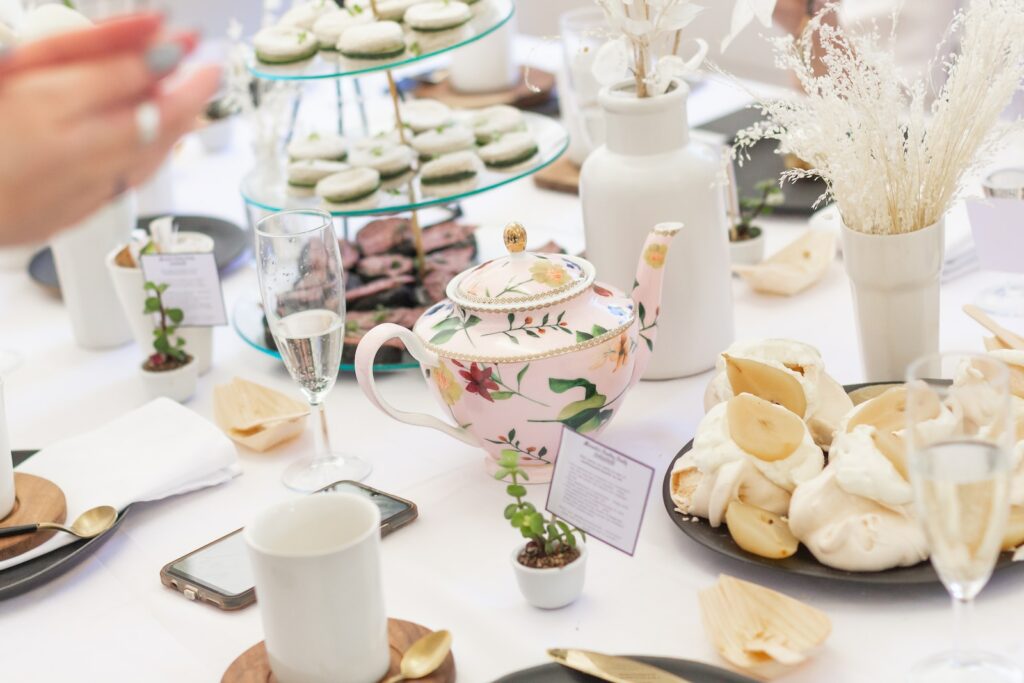Afternoon Tea: A Social Institution & A Timeless British Tradition Challenging Anxiety Crisis
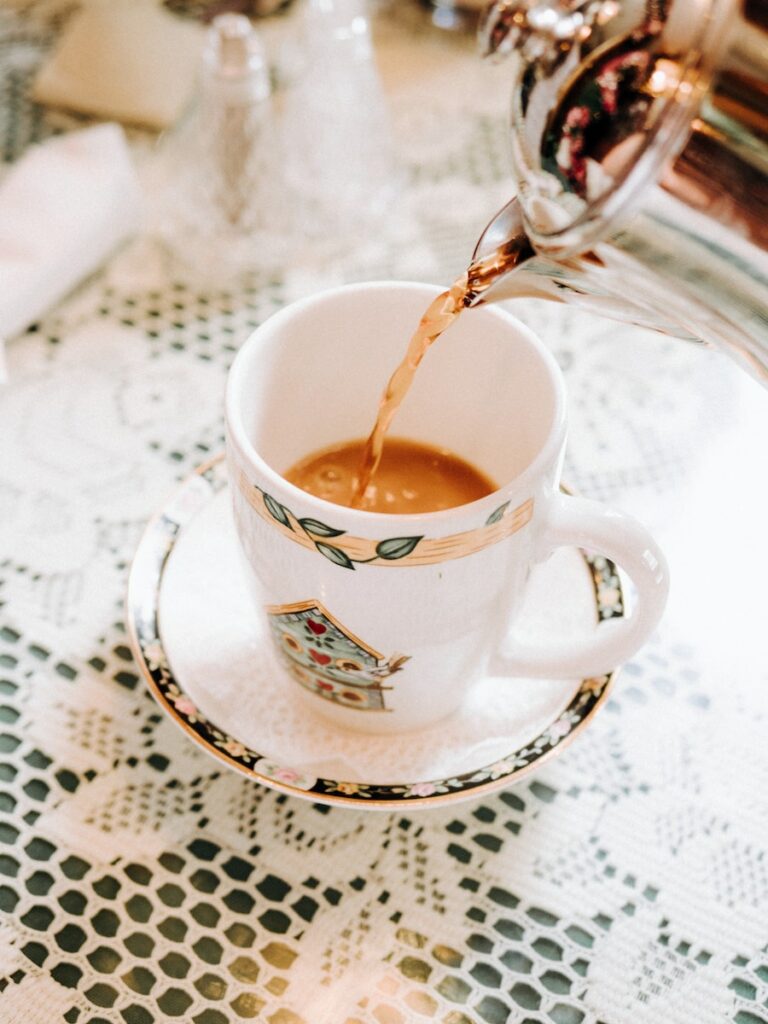
In the delicate sounds of porcelain teacups and the fragrant swirls of steam, there is a story of two different women, from different times, who have shaped the very essence of what we now know as afternoon tea. As we celebrate Mental Health Awareness Week from 15-21 May this year, we invite you to explore the inspiring tale of Portuguese princess Catherine of Braganza and the seventh Duchess of Bedford, Anna Russell, whose stories intertwine in every sip of tea we savour today.
In a world where the hurried pace of life often leaves us yearning for moments of respite and connection, afternoon tea is a a haven of tranquillity amidst the chaos. Not everyone has a Blue Drawing Room to enjoy the gentle clink of fine china, but each one of us could enjoy the aroma of freshly brewed tea, and the laughter that fills the air as we gather with our friends and family over a cup of tea- turning simple things into an experience that nourishes our souls and heals our hearts. As we pause to recognize the profound wellbeing power of afternoon tea, let’s enjoy the soothing effect that relaxed conversations have on our minds and spirits.
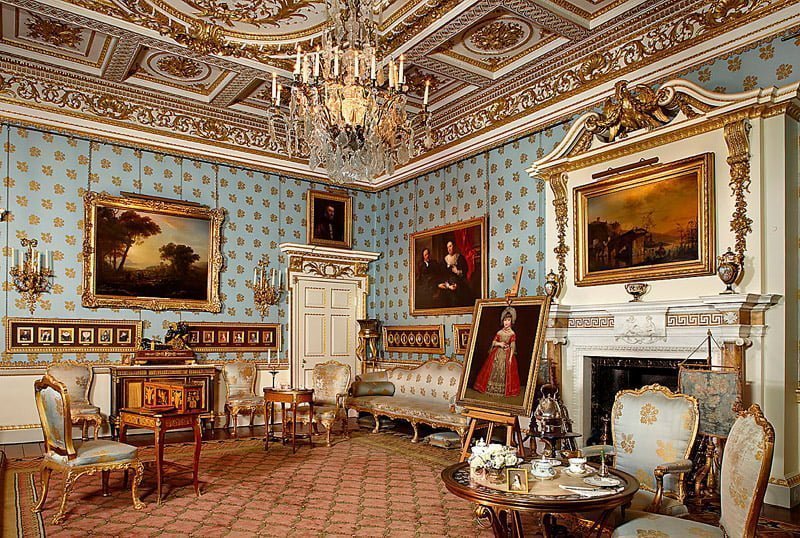
The Blue Drawing Room where Anna Russell entertained guests for Afternoon Tea (image credit: Woburn Abbey
Over 150 years ago, the tradition of British afternoon tea was born, thanks to the seventh Duchess of Bedford, Anna Russell. Seeking to fill the gap between lunch and dinner, the Duchess began serving a light meal in the afternoon. This meal typically consisted of scones generously topped with jam and cream, delicate cucumber finger sandwiches, an array of pastries and cakes, and copious pots of Darjeeling and Earl Grey tea.
This elegant ritual quickly gained popularity among the British aristocracy, transforming into the experience we know and love today. Despite the passage of time, the essence of the Duchess’s preferred menu remains a cornerstone of traditional afternoon tea. From grand hotels to quaint tearooms, the spirit of Anna Russell’s innovation continues to captivate both locals and visitors alike, making it an enduring symbol of British culture.
London is not only famous for its rich history but also as the epicentre of one of the most cherished and timeless treats: the afternoon tea. An experience that has become synonymous with British culture, drawing millions of visitors each year to indulge a memorable time.
From luxurious hotels and historic establishments to charming tea rooms and trendy cafes, London’s afternoon tea scene is filled with an impressive range of venues. It is estimated that over 7.6 million people partake in this ritual annually in the UK, with London’s establishments accounting for a significant portion of that number.
The afternoon tea is a welcome respite experience, allowing people to connect with the past, enjoy the present, and embrace the art of conversation. Whether you are a tea or coffee lover or simply seeking a bite between meals, afternoon tea is an inspiring British tradition that has captivated the hearts of both locals and travellers for generations.
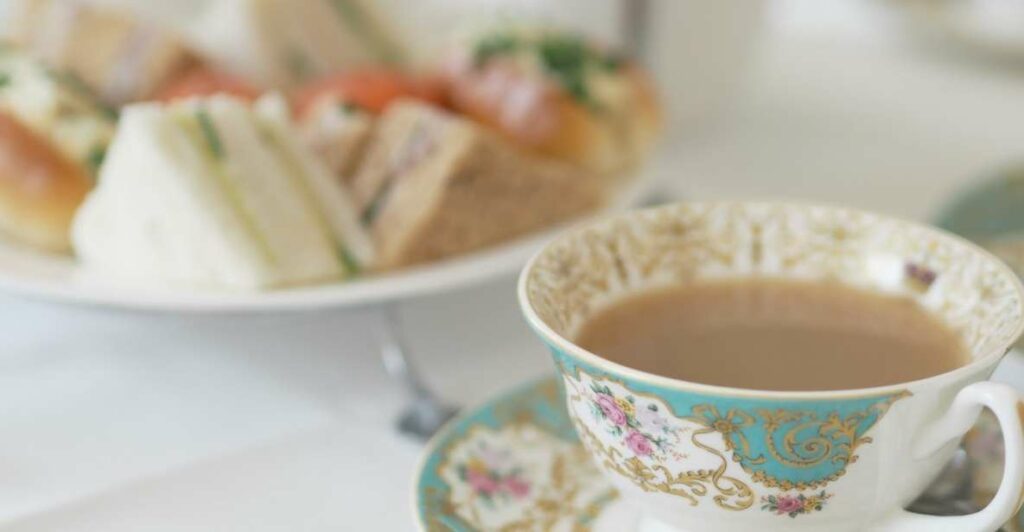
The brief history of British Afternoon Tea
A young Portuguese princess, Catherine of Braganza, journeyed across the seas to marry King Charles II in the 1660s. She brought with her a dowry rich in the aromatic and exotic treasure of tea leaves. As the fragrant brew infused the royal court, it quickly gained favour and became the official court beverage.
In those early days, tea was a scarce and precious commodity, its delicate leaves harvested from distant lands and brought to England’s shores at great cost. The expense of the tea and the heavy taxes imposed upon it rendered it a luxury only the aristocracy and the upper classes could afford. And so, tea became a symbol of status and refinement, a privilege enjoyed by the fortunate few.
As the passion for tea swept through the corridors of power, the East India Trading Company, an ambitious and influential force in global trade, sought to harness the growing demand for this enticing elixir. They presented King Charles II with small, precious gifts of tea from China, hoping to win his favor and, in turn, secure special rights and privileges for their company. Their strategy proved fruitful, as they eventually gained a near monopoly on the importation of tea from China, further cementing tea’s place in the annals of English history.
Yet, it was not until the 1840s, nearly two centuries after Catherine of Braganza first introduced tea to the English court, that the elaborate and elegant custom of afternoon tea truly took root. As the ritual evolved, it blossomed into a cherished tradition, one that transcended the boundaries of class and status, and captured the hearts and imaginations of people from all walks of life.
The inspiring tale of tea’s journey from the distant shores of China to the elegant drawing rooms of England is a testament to the power of a simple cup of tea to unite, delight, and bring comfort to those who partake in its pleasures. In the story of Catherine of Braganza, we find the seeds of a tradition that has grown and flourished, becoming an enduring symbol of refinement, connection, and the shared joy of life’s finer moments.
The afternoon tea has charmed the world with its delicate finger sandwiches, scrumptious scones, and elegant pastries for generations. A symbol of the simple things in life, the sip of tea in the afternoon has an intriguing history that dates back to the 19th century.
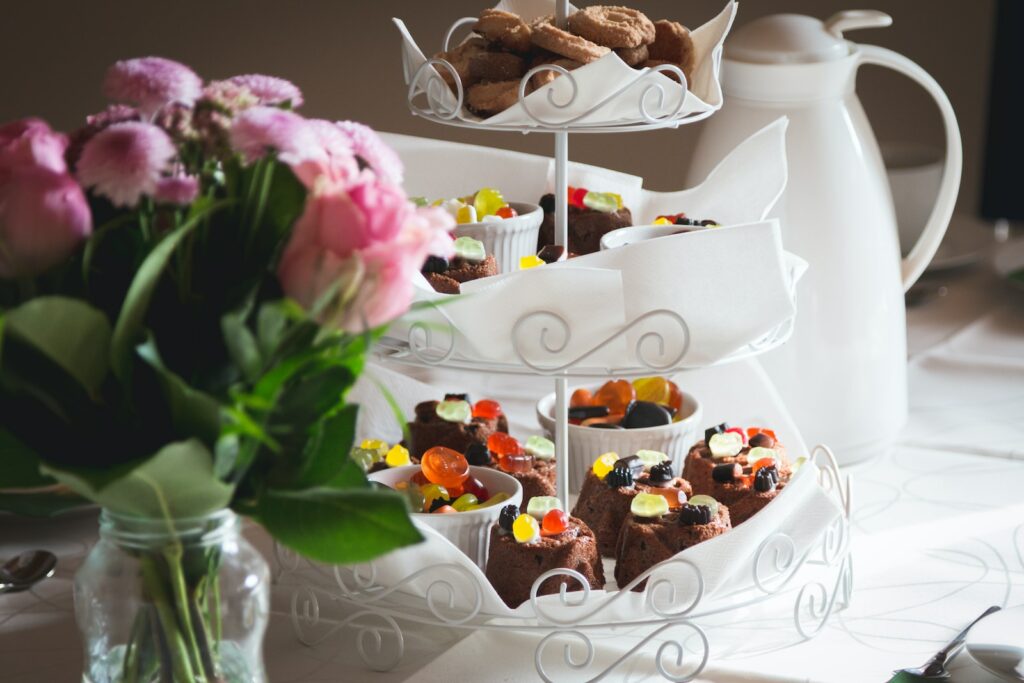
The concept of afternoon tea is credited to Anna, the 7th Duchess of Bedford, who lived during the early 19th century. During that time, it was customary to serve only two meals a day: breakfast and dinner. Dinner was typically served late in the evening, leaving a long gap between meals. The Duchess often found herself feeling peckish during the afternoon, and to alleviate her hunger, she requested her servants to bring her a selection of small sandwiches and tea.
Soon, the Duchess began inviting friends to join her for this afternoon refreshment, and the practice gradually gained popularity among the upper class. As the trend spread, afternoon tea became a fashionable social event for high society ladies, who would dress in their finest attire and gather in drawing rooms to enjoy conversation, tea, and light fare.
The history of afternoon tea dates back to the early 19th century, in the United Kingdom. It was during this period that Anna, the 7th Duchess of Bedford, found herself feeling peckish in the late afternoon. To alleviate her hunger, she requested a light meal, accompanied by tea, to be served in her room. Soon, she began inviting friends to join her, and the tradition of afternoon tea was born.
Tea Afternoon-a British traditions that is challenging the present anxiety crisis
Tea has been a staple of British society since the 17th century when Catherine of Braganza, the Portuguese wife of King Charles II, popularised the beverage. By the 19th century, tea had become an integral part of British culture, with various customs and rituals emerging around its consumption.
In the world of Oscar Wilde‘s The Importance of Being Earnest, a delightful afternoon tea serves as the stage for a battle of wits, as Algernon and Cecily engage in a spirited exchange of repartee amidst delicate sandwiches and tea. Their conversation dances and weaves, a testament to the power of words and the magic of a shared cup of tea.
In ‘Mrs. Dalloway,’ Virginia Woolf paints a vivid picture of a society in transition, with afternoon tea at its heart. As Mrs. Dalloway prepares for her tea party, the intimate conversations and quiet revelations of her guests illuminate a rich tapestry of human experience, all woven together by the delicate threads of this timeless ritual.
The Remains of the Day,’ by Kazuo Ishiguro takes us into the life of an English butler, Mr. Stevens, whose dedication to the art of afternoon tea service reflects the larger themes of loyalty, duty, and the fading grandeur of a bygone era. Within the dance of teacups and silver, we discover a world of emotion and longing, hidden beneath a veneer of tradition.
On the silver screen, the elegance and charm of afternoon tea are brought to life in films such as ‘Gosford Park,’ a murder mystery set against the backdrop of a lavish English country house. As the characters navigate the twists and turns of the plot, their afternoon tea rituals serve as a poignant reminder of the divide between the lives of the privileged and the struggles of those who serve them.
In Pride and Prejudice, afternoon tea is a setting for connection and courtship, as Elizabeth Bennet and Mr. Darcy find their way through the labyrinth of love and societal expectations. Amidst the clink of china and the rustle of silk, hearts are revealed, and destinies are forged.
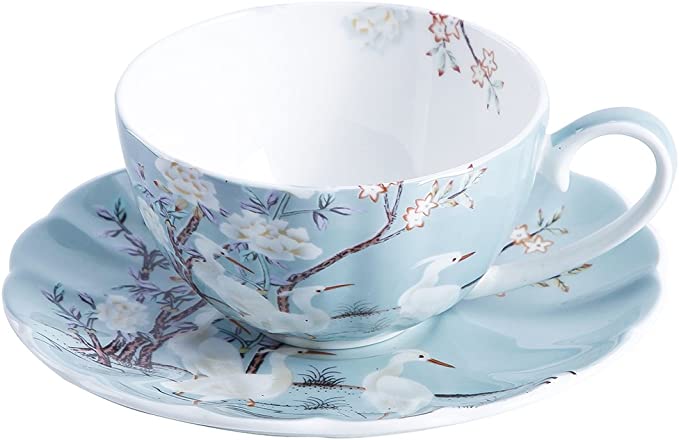
In Alice in Wonderland, a whimsical and unforgettable tea party invites us to embrace the magic and wonder of the imagination. As Alice and the Mad Hatter share a cup of tea, we are transported to a world where anything is possible and the impossible is just a sip away.
The inspiring power of afternoon tea is reminding us of the beauty of shared moments and the simple pleasures of life. As we turn the pages of these books and watch the frames of these captivating films, we are raising our teacups in a toast to the enduring charm and magic of afternoon tea.
So, let us raise our teacups in gratitude to Catherine of Braganza and Anna Russell, whose indelible influence on the tradition of afternoon tea has left us wanting for more every time. There is beauty and elegance in having a cup of afternoon tea, nurturing our mental health and finding solace in the simple pleasures that life has to offer.
